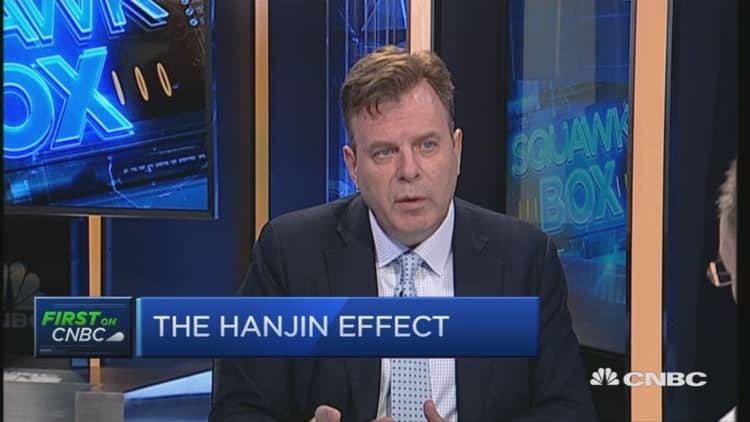
For some global shippers, the bankruptcy of South Korea's Hanjin was both a fillip and a sharp reminder of just how much clean-up was needed in their businesses.
Maersk, the world's largest shipping company, which shares customers with Hanjin, told CNBC on Monday how it dealt with the multi-billion dollar crisis.
"Right after the bankruptcy was announced, the phone started ringing and people asked us for help. They (customers) had cargo on the water and didn't want to miss the seasons in the U.S. and Europe so we helped them," Asia Pacific CEO Robbert van Trooijen told "Squawk Box." "But gloating is not the right term here."
An estimated $14 billion worth of cargo was stranded at sea after Hanjin Shipping, the world's seventh-biggest container line, filed for court receivership on August 31, shocking the logistics industry. The company's Asia-U.S. route is on for sale as part of insolvency proceedings, with the bidding deadline extended on Monday to November 10, according to a Dow Jones report.
Following the company's receivership, clients such as LG Electronics canceled orders with Hanjin and sought emergency alternatives to ship their freight, Reuters reported at the time.
So how did Maersk help?
"We put replacement tonnage on the berth to make sure the cargo that was supposed to replace the orders that never reached the store are being processed and delivered on time," van Trooijen explained. "The industry hasn't seen a bankruptcy for some time so many people had to look up in the book again what it means when a shipping line goes bankrupt."
In the aftermath of Hanjin, there was a flight to safety, he noted, explaining that customers now looked closely at the fundamentals of shipping lines before deciding on service providers. "When you have cargo stuck on a ship for months because a company went bankrupt, that's a big risk to the supply chain industry."
Incidents including Hanjin's receivership sparked a welcome wave of consolidation in a sector grappling with overcapacity and slow global trade.
"Since the time I've been in the industry, which is 25 years, I've never seen as much consolidation as we've seen in last two years...It's finally taking place in a serious way," van Trooijen said.

